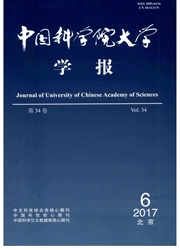

 中文摘要:
中文摘要:
Large active wing deformation is a significant way to generate high aerodynamic forces required in bat’s flapping flight. Besides the twisting, elementary morphing models of a bat wing are proposed, including wing-bending in the spanwise direction,wing-cambering in the chordwise direction, and wing area-changing. A plate of aspect ratio 3 is used to model a bat wing, and a three-dimensional unsteady panel method is used to predict the aerodynamic forces. It is found that the cambering model has great positive influence on the lift, followed by the area-changing model and then the bending model. Further study indicates that the vortex control is a main mechanism to produce high aerodynamic forces. The mechanisms of aerodynamic force enhancement are asymmetry of the cambered wing and amplification effects of wing area-changing and wing bending. Lift and thrust are generated mainly during downstroke, and they are almost negligible during upstroke by the integrated morphing model-wing.
 英文摘要:
英文摘要:
Large active wing deformation is a significant way to generate high aerodynamic forces required in bat's flapping flight. Besides the twisting, elementary morphing models of a bat wing are proposed, including wing-bending in the spanwise direction,wing-cambering in the chordwise direction, and wing area-changing. A plate of aspect ratio 3 is used to model a bat wing, and a three-dimensional unsteady panel method is used to predict the aerodynamic forces. It is found that the cambering model has great positive influence on the lift, followed by the area-changing model and then the bending model. Further study indicates that the vortex control is a main mechanism to produce high aerodynamic forces. The mechanisms of aerodynamic force enhancement are asymmetry of the cambered wing and amplification effects of wing area-changing and wing bending. Lift and thrust are generated mainly during downstroke, and they are almost negligible during upstroke by the integrated morphing model-wing.
 同期刊论文项目
同期刊论文项目
 同项目期刊论文
同项目期刊论文
 期刊信息
期刊信息
